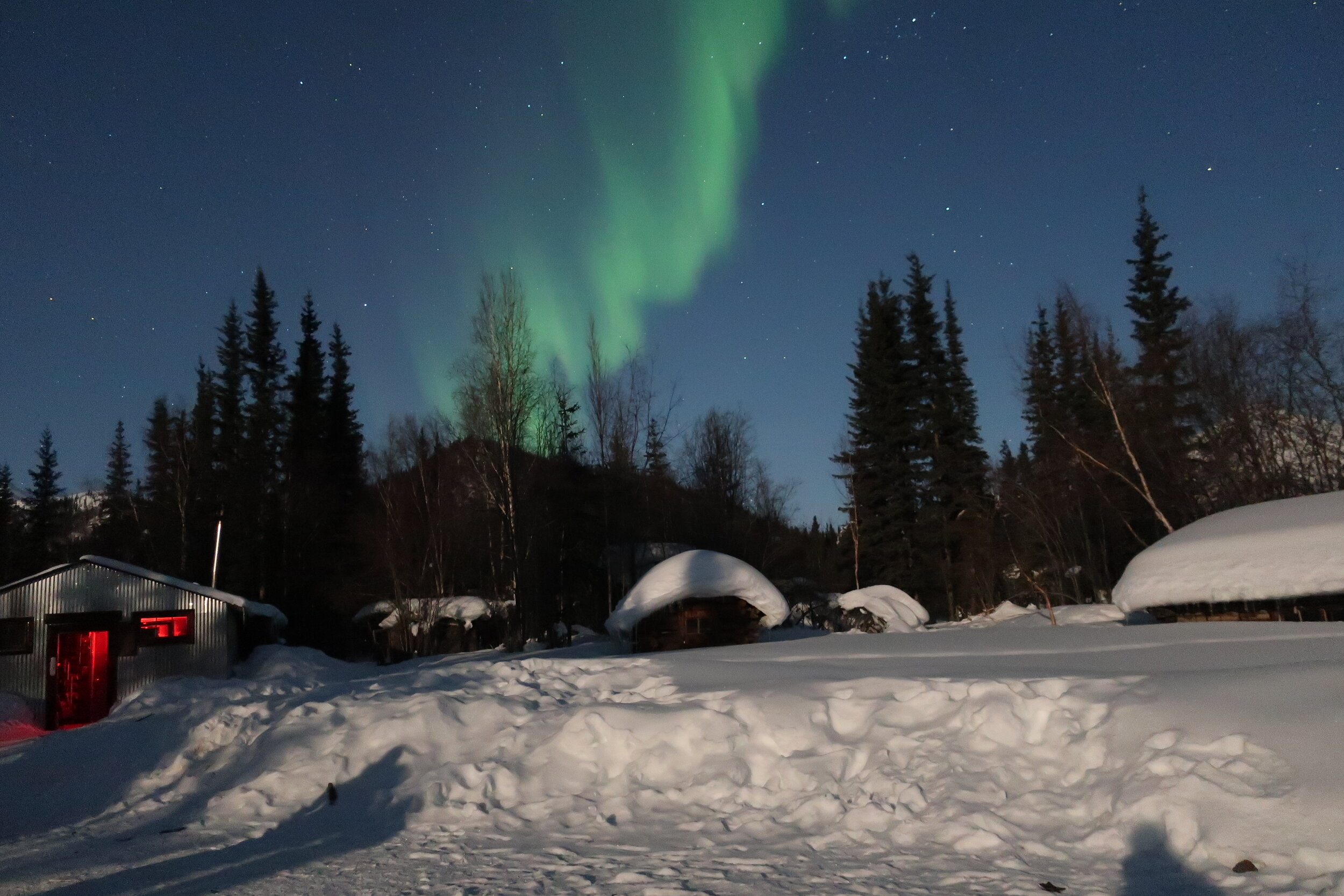

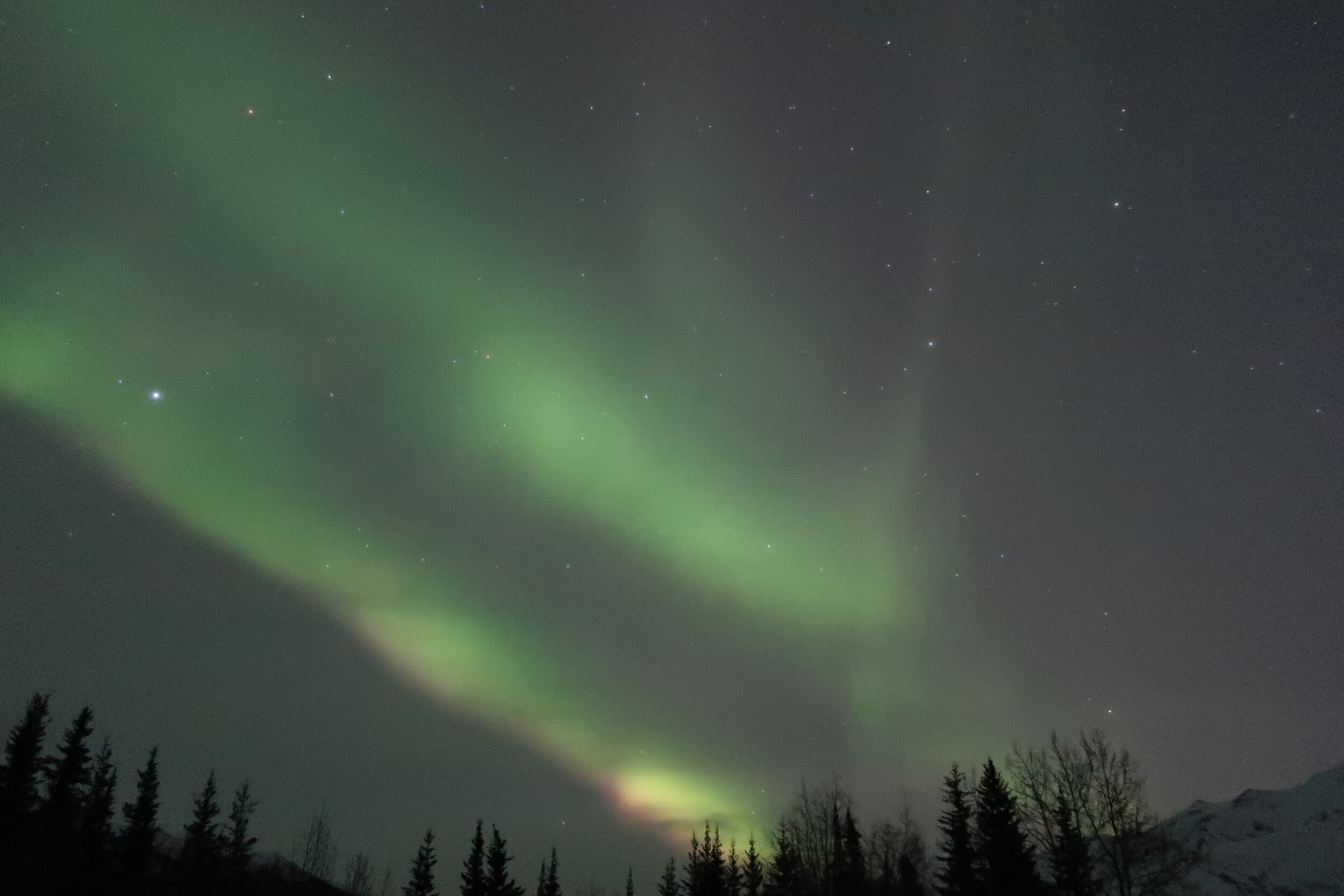
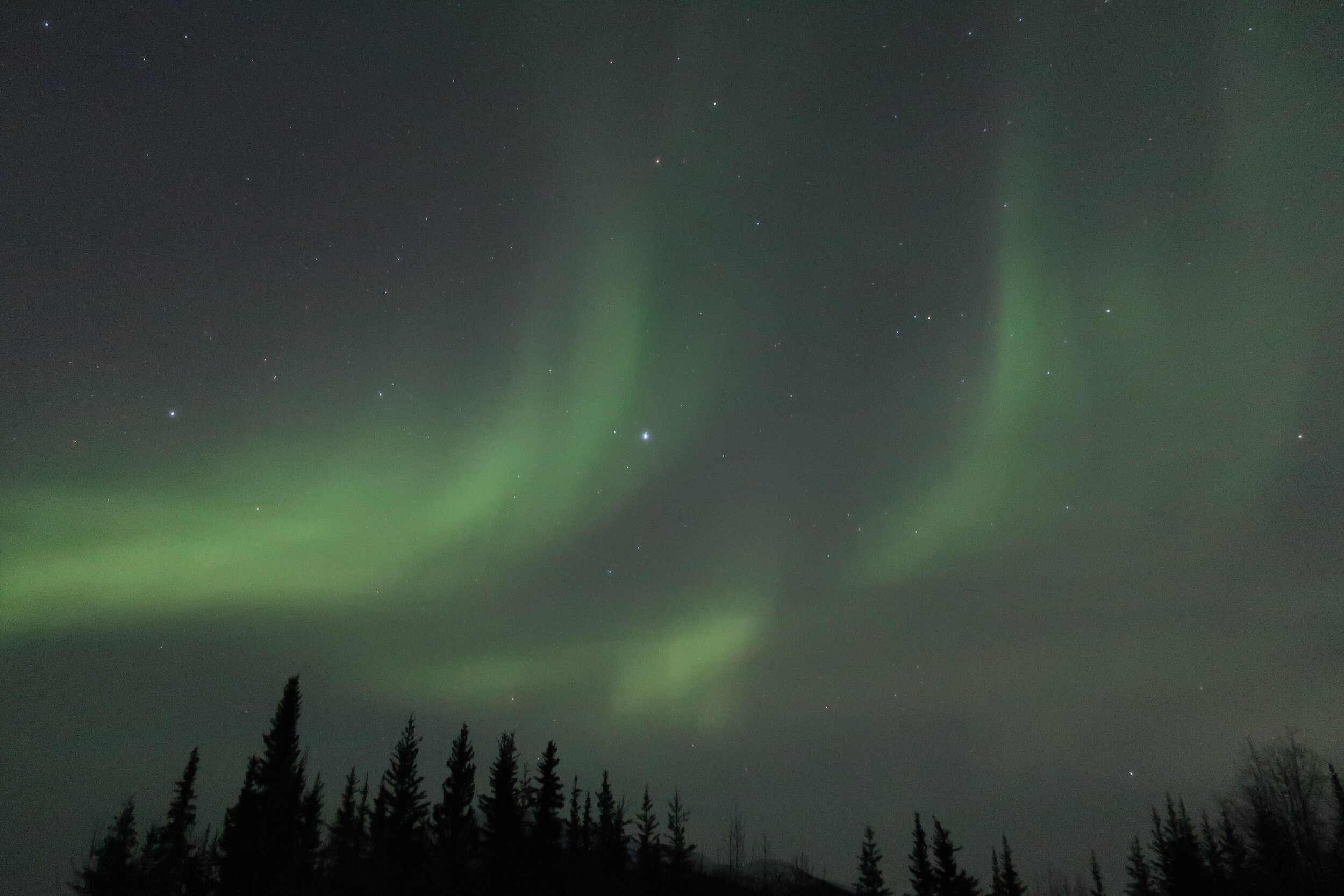

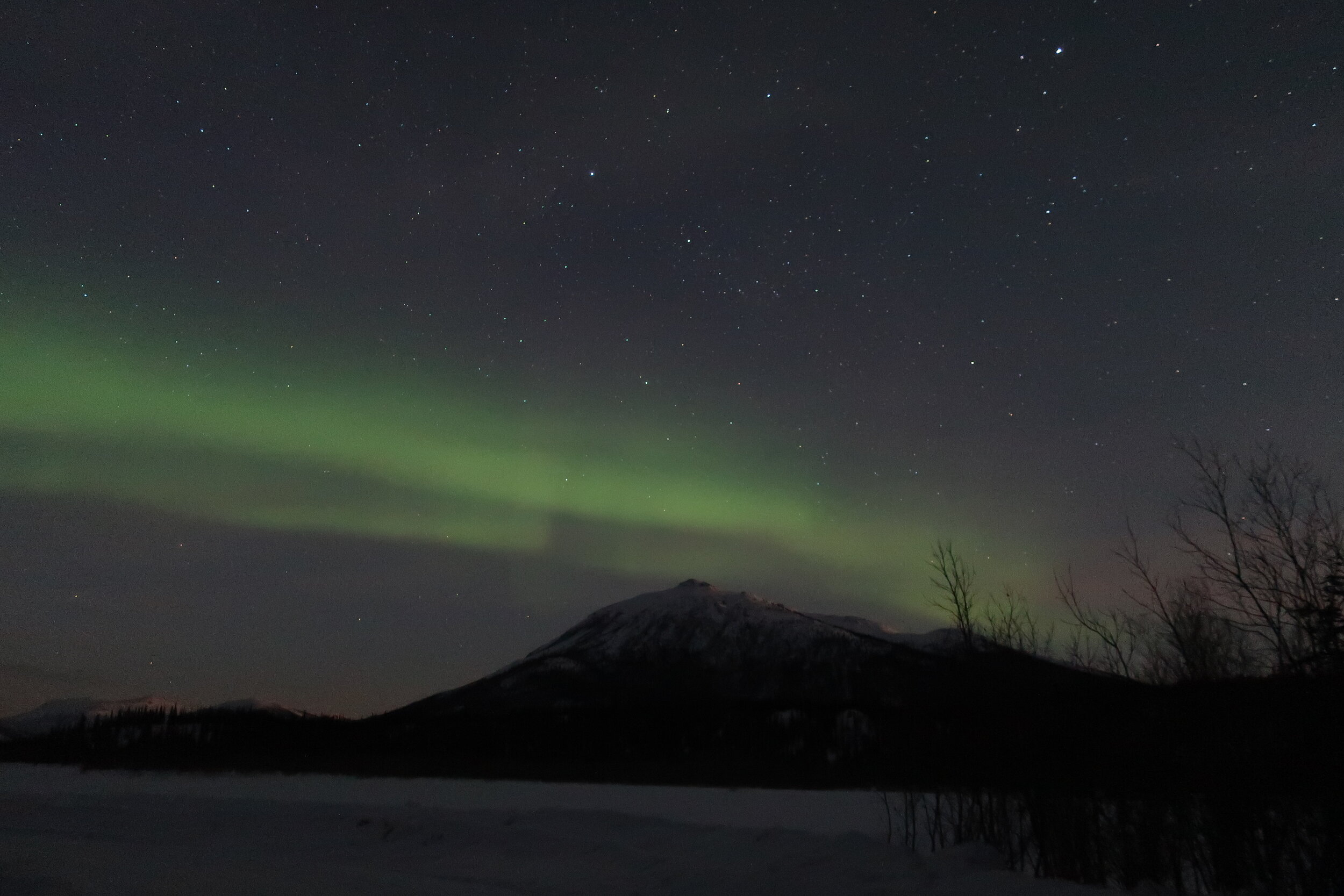
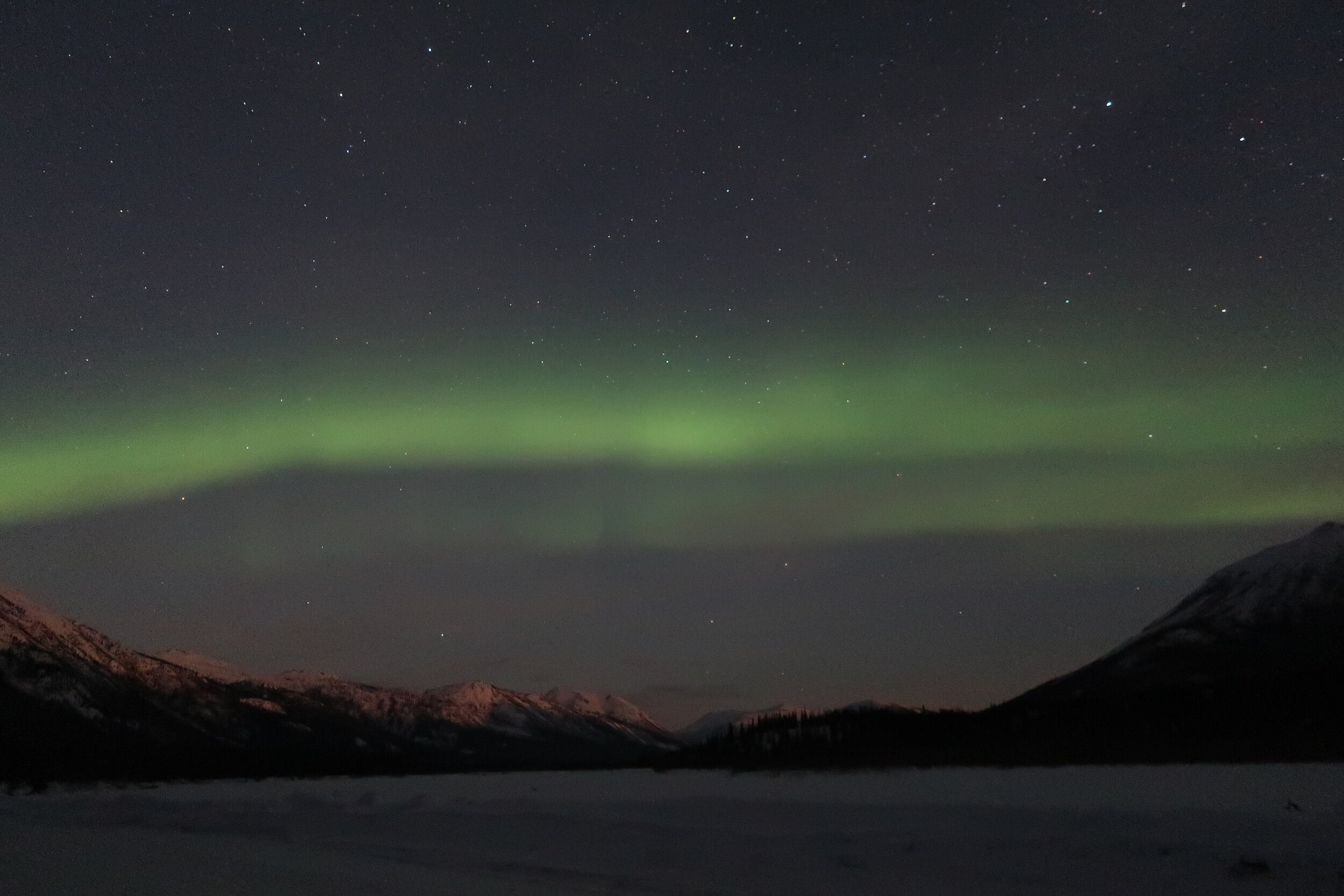


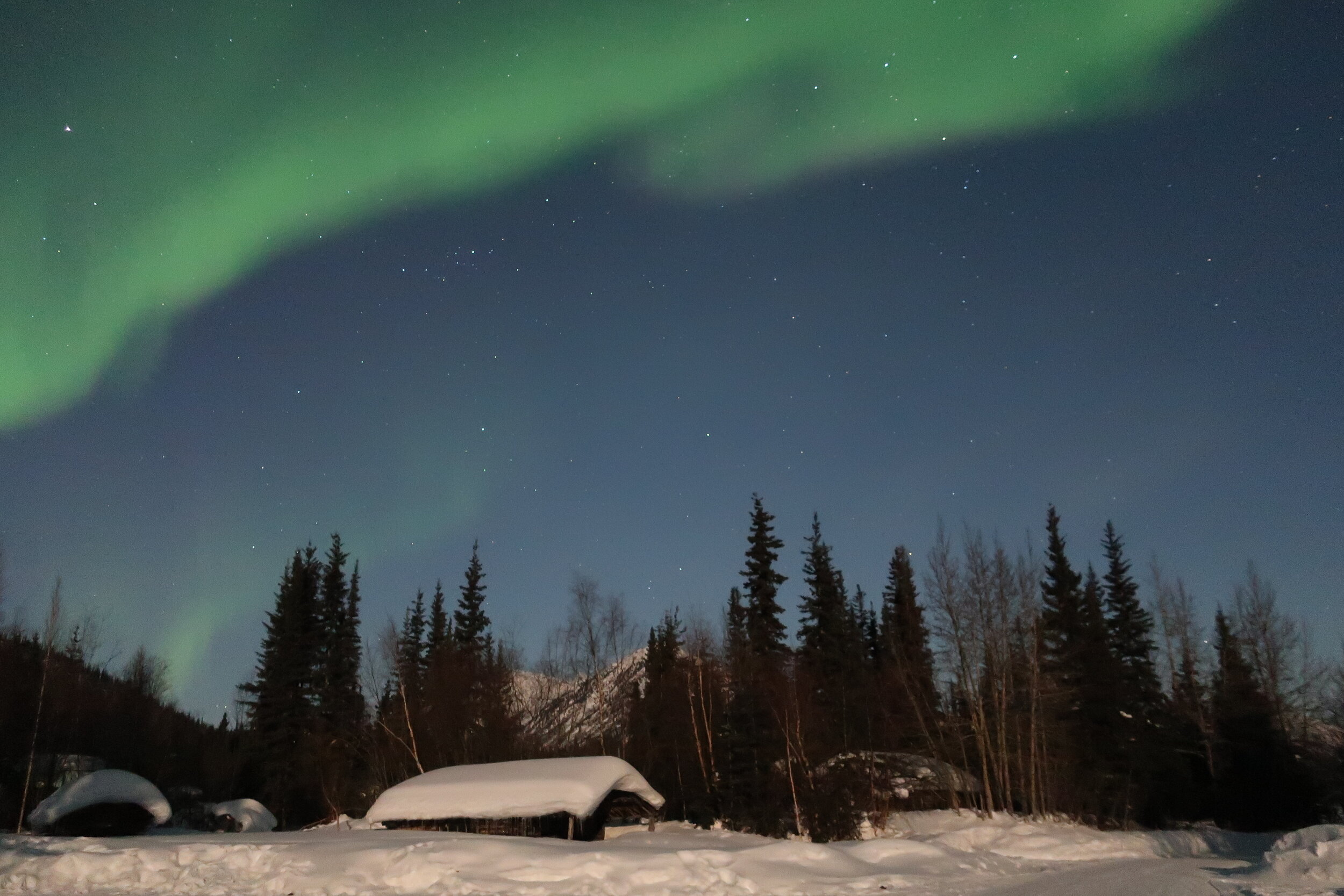
All of the photos above were taken in Wiseman on nights where the Kp index was a 2.
So, imagine this. You’re all set to go aurora-watching: you finally made it to Coldfoot, you rented or bought good boots and a heavy-duty coat in town, and you even brought your camera all this way. Then you check the aurora forecast...and it’s only a two.
Just a two, after you’ve come all this way?
Seriously, we get it. If you talk to a coworker in the cafe or your guide on the safari, they’ll tell you: Don’t panic! You should still go out and look for it. You could still see great aurora!
But...isn’t that just something we’re being paid to tell you in order to get you to go to Wiseman anyway? Nope! Really, it’s not. We know that it’s very possible--even probable, if it’s clear--that you’ll still see the aurora. (And that’s whether or not you come with us to Wiseman.)
Before we explain why, we should say: the aurora is still a natural phenomenon, which means we can’t control it. We can’t make it come out, or clear up bad weather so you can see it. What we can and will always do, though, is try to make sure you have the greatest possible chances of seeing it--if and when it does come out.
With that in mind, let us explain why aurora forecasts are probably not the best way of determining how the aurora will look in Coldfoot, specifically.
What is an aurora forecast?
Before we look at why they might not work so well for Coldfoot, first we have to understand what an aurora forecast really is.
You might’ve heard us talk about being located directly beneath the aurora oval. This means that we’re smack dab in the middle of the band where aurora happens. When we see the northern lights, they’re usually directly overhead, and we can see 100% of visible auroras on clear nights.
Now, let’s move into the forecast itself. An aurora forecast is generally expressed using a number called a Kp index. The higher the index, the higher the geomagnetic activity is predicted to be. The geomagnetic activity creates the aurora, so, the higher the geomagnetic activity, the better the aurora is predicted to be!
So...what’s the catch?
The forecast is simple, right? Kind of...there’s still a catch. And it has to do with how the Kp index is calculated.
The algorithm used to formulate the Kp index is actually designed to let people living outside the aurora oval know what their likelihood of seeing the aurora will be.
In other words, an aurora forecast describes how wide the “band” of the aurora oval is going to be: or, how far north or south the aurora could potentially be spotted.
What does the forecast mean for Coldfoot?
The Kp index basically tells us how wide the aurora band is going to be; but, conveniently, Coldfoot is located under the part of the band that stays put. No matter how wide or how narrow the band gets, we’re still smack dab under it--so, if the aurora’s visible and if the weather’s clear, you’ll likely get a glimpse of the northern lights.
So, the next time you’re out aurora-hunting in Coldfoot, and the forecast is only a 2, don’t fret. We’re not trying to trick you! (Check the gallery at the top for evidence.) The aurora isn’t guaranteed, of course, like any other weather event. And it could still be cloudy or snowy.
But, by coming to Coldfoot, you’ve already given yourself the best possible chance of seeing the aurora borealis. And while you’re here, the only way you’ll see the aurora is if you get outside and look!